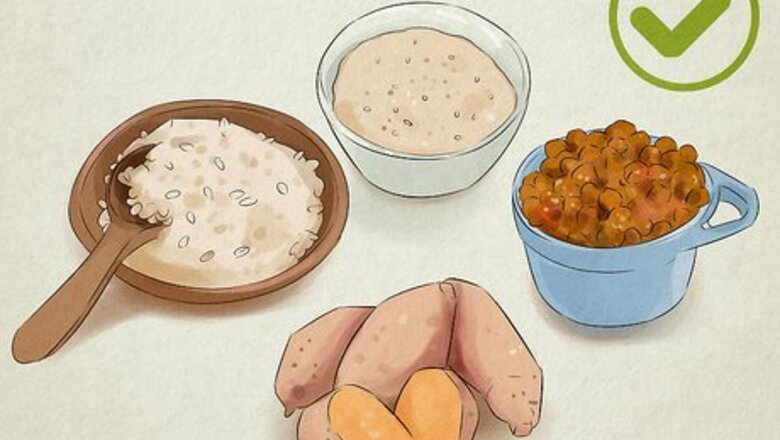
views
Eat a diet that's high in carbohydrates.
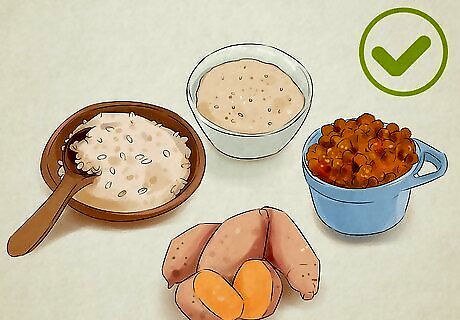
Your body turns them into energy that's stored in your muscles. Around 50-60% of your daily calories should come from carbs so you have plenty of fuel for your workouts. Although it's easy to fill up on carbs, reach for high-quality carbs that give you fiber and nutrients, like whole grains. For example, add these to your daily diet: Oats, brown rice, and quinoa Sweet potatoes and potatoes Fruits like bananas, mangoes, avocadoes, and peaches Vegetables like Brussels sprouts, carrots, broccoli, and cauliflower
Eat protein every 3 to 4 hours.
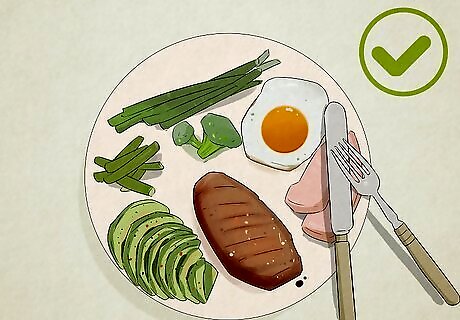
Give your body longer-lasting energy from nutritious protein sources. Protein is also a great way to get more calories so you don't continue to lose weight. Try to get about 25% of your calories from protein. You might eat lean meat, tofu, nuts, or beans, for instance. Protein shakes are also a great way to get calories throughout the day. You might sip one an hour before a workout or drink one before you go to bed.
Include healthy fats in your meals.
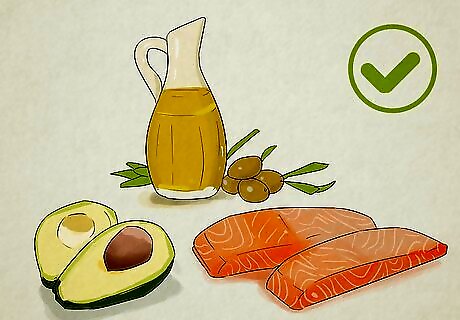
Eat monosaturated fats so your body can release hormones that build muscle. Drizzle heart-healthy fats like olive oil, canola oil, or coconut oil over your food, or eat foods that are naturally high in healthy fats like avocados, salmon, sardines, and trout. Try to get 20 to 35% of your daily calories from monosaturated fat. Skip the unhealthy fats found in fast food and packaged snacks since these are high in saturated- and trans-fats.
Add calories to your diet to build muscle.

Eat an extra 500 calories a day to support muscle growth. If you're working out more and building muscle, your body needs more calories so you don't lose more weight. Aim for an extra 500 calories spread out across your meals. Remember to reach for nutritious food instead of filling up on high-calorie snacks or convenience foods. 500 calories might sound like a lot, but if you add a few snacks to your daily diet, you can usually reach this. Try a handful of nuts, protein shakes, smoothies, or hardboiled eggs with crackers.
Snack 1 to 4 hours before you work out.
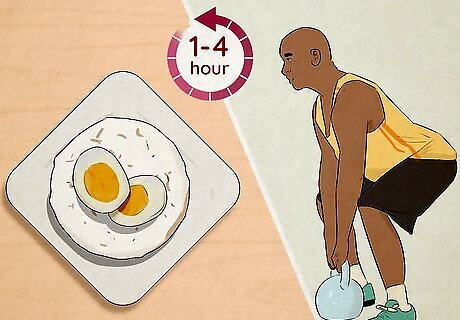
Reach for a fast-digesting carbohydrate and protein to give you energy. You don't want to wear out too soon into your workout so fuel up beforehand. Snack on a piece of toast with nut butter and jam, for instance, or grab some grapes and a handful of nuts. Drink water or a sports drink along with your pre-workout snack. If you're going to work out for more than 1 hour, you may need to eat another small snack. For example, eat a rice cake with a hardboiled egg or a piece of cheese with a few berries.
Eat a post-workout meal 30 to 60 minutes after you're done.
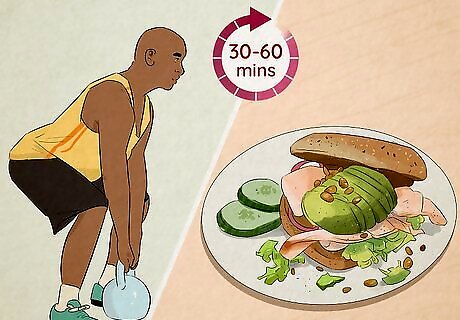
Re-fuel your body so you can repair muscles and store energy. If you're skinny, your body needs extra calories to build and support muscles so eat a meal that's high in carbohydrates once you've finished exercising. Aim for 3 or 4 parts carbohydrates to 1 part protein. For example, eat a bowl of hot amaranth cereal with dried fruit and nuts or chia seeds.
Create a weight-training schedule.
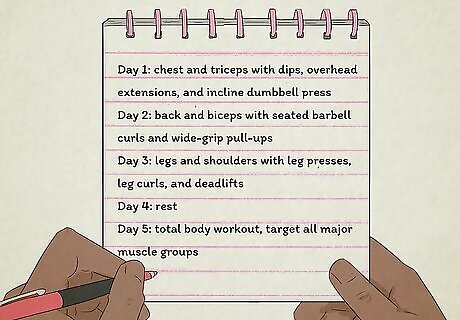
Lift weights about 4 days a week. To bulk up and tone your muscles, use high-resistance weights with a low number of repetitions. Specifically, aim to do 3 to 5 sets of 8 to 12 repetitions for each muscle group. To make your weight-training schedule interesting, you can switch up your focus each day. For example, on: Day 1: work your chest and triceps with dips, overhead extensions, and incline dumbbell press Day 2: work your back and biceps with seated barbell curls and wide-grip pull-ups Day 3: work your legs and shoulders with leg presses, leg curls, and deadlifts Day 4: rest Day 5: do a total body workout where you target all of your major muscle groups
Schedule time to rest.
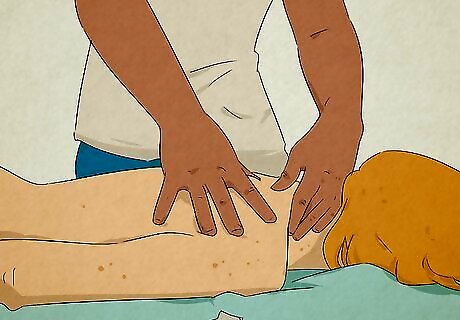
Take a day off every 3 or 4 days so your muscles can repair and recover. You may work out Monday through Wednesday and take Thursday off, for instance. Then, do slower cardio work on the weekends. Don't forget to get plenty of rest every day, too. Try to sleep at least 8 hours a night so your body. Your body releases the majority of its growth hormones while you sleep, which is why a good night's rest is critical. If you're extra tired from working out, take naps! You can also rest and relax by getting deep-tissue massages.
Limit cardio activities to 3 or 4 times a week.

Stick to 30-minute aerobic workouts so you don't burn too many calories. High-intensity aerobic activities like running burn a lot of calories so you might find it hard to build muscle. Instead, plan on doing low-intensity activities no more than 3 times a week. Keep in mind that some days you'll be doing cardio and weights. This keeps up your cardiovascular health, but you shouldn't lose more weight. Low-intensity aerobic activities include: Walking up and down hills Doing a stair-climber machine Cycling in a high gear Walking on your treadmill
Keep active throughout the day.
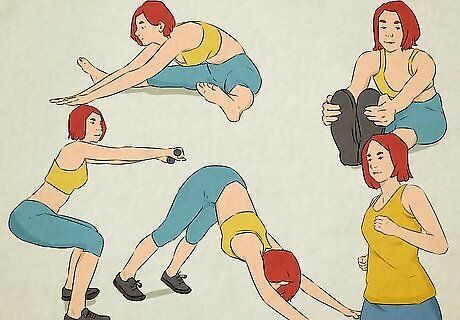
Find ways to build muscle even when you're not doing a workout. It can be hard to carve out workout time, but staying active is important for gaining muscle mass. If you're pretty sedentary during the day, try to get up and walk around or stretch every 30 minutes. Just being more active every day can help you maintain the muscles that you've worked so hard to build.
















Comments
0 comment